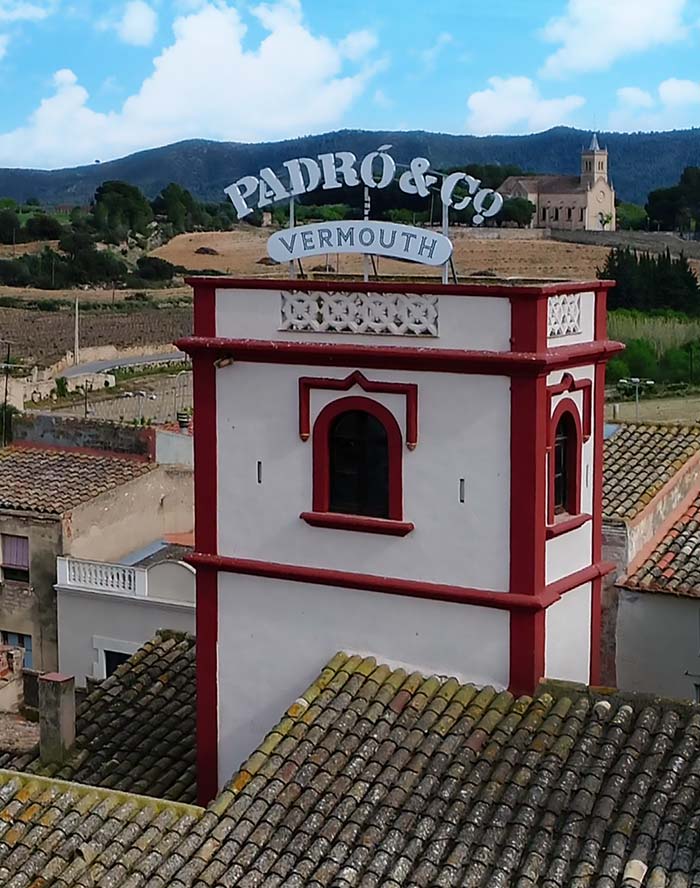What to do around Casa Vermouth Padró in Bràfim
Vermouth tourism in autumn
Autumn is a wonderful time to discover a few vermouth-making secrets. If you are coming for a guided tour at our Casa Vermouth Padró, why not take the opportunity to learn a little more about the surrounding area? The village of Bràfim, home to our Casa Vermouth Padró, lies in the Alt Camp, one of the 6 comarcas or counties that make up the Camp de Tarragona region. The village is surrounded by cherry trees, olive trees and vineyards which, in autumn, exude auras of work accomplished as their leaves gradually change colour. The vines are mulched and then turn from green to reddish tones, after which they will finally take some rest. The wineries, meanwhile, are busy. The air is filled with those characteristic post-harvest aromas, as the grape must is prepared and the whole winemaking process begins.
Enjoy a panoramic view of Bràfim from the Sanctuari de la Mare de Déu del Loreto, a chapel perched on a hill just outside the village. The parish church of Sant Jaume and the stainless-steel vats at the Cooperativa and Padró family winery are clearly visible.
The church of Sant Jaume is a transitional building using late gothic to baroque architectural styles. It was built at the end of the 17th century on the ruins of an earlier church. The church houses a magnificent baroque altarpiece depicting the Dormition of the Mother of God.
The watchtower at Cal Garriga, where our Casa Vermouth Padró is now located, can also be clearly seen from this hill.


La Ermita, which is how the inhabitants of Bràfim refer to their chapel, is a neo-Romanesque style building dating back to the late 19th century. It is also built on the site of an earlier church which, for two centuries, had already housed a wooden image of the Virgin brought back from a pilgrimage to Rome.
La Ermita is popular as a venue for religious celebrations and as a place to spend some leisure time among pine and olive trees.
Land cultivated since antiquity
The fountain next to the Ermita was built by Catalan architect and Gaudi disciple, Josep Maria Jujol. This beautiful piece of workmanship anchors us to the land whilst at the same time inviting us to fly with the silver figure of a bird crowned with a cross.
From here you can set off on a route to discover the mark left in the Camp de Tarragona region by this great architect. His modernist Montserrat chapel or Ermita, clearly inspired by the Sagrada Familia in Barcelona, is in the neighbouring village of Montferri.
You can also visit some of the Alt Camp’s modernist wineries. Or travel back in time and discover the heritage of the age, centuries ago, when Tarraco (the modern-day city of Tarragona) was the capital of one of the largest provinces in the Roman Empire.


Walk down to the river Gaià or up to the top of Montferri’s Tossa Grossa. This hill is 387m high and offers an excellent view over the Camp de Tarragona region.
The Torre del Moro (Arab’s Tower), also known as the Montferri Tower, the string of medieval fortifications located along the entire course of the Gaià river and the Cistercian monastery of Santes Creus (just 10minutes from Bràfim) remind us that this area was once a frontier land between the Christian and Muslim worlds. In fact, it is quite possible that the name Bràfim comes from the time of Arab rule, although there are historians who maintain that the name is of Judaic origin. Either way, the native Iberians and later the Romans, from the second century BC onwards, had already populated this area and cultivated olive trees and vineyards.





